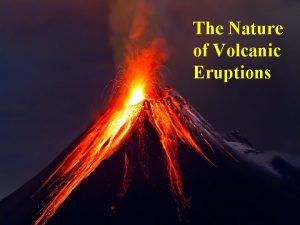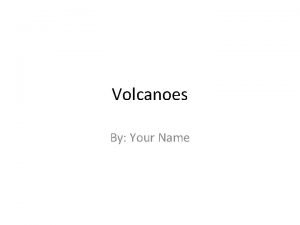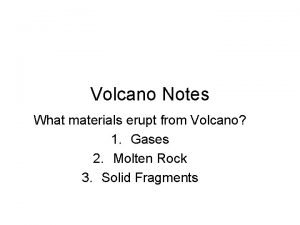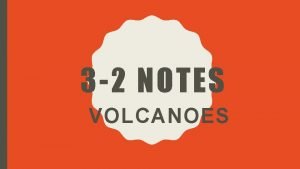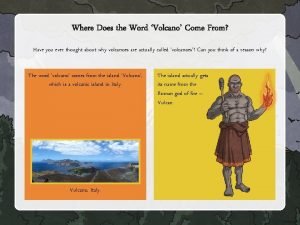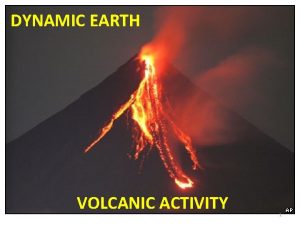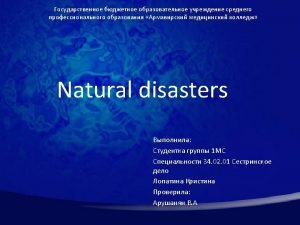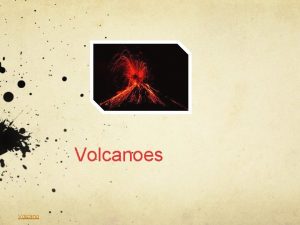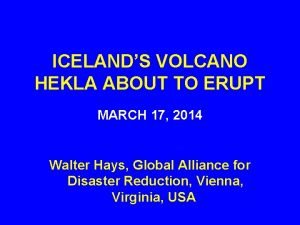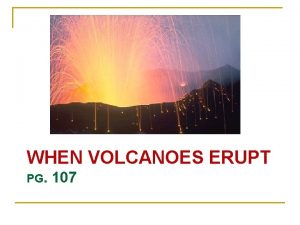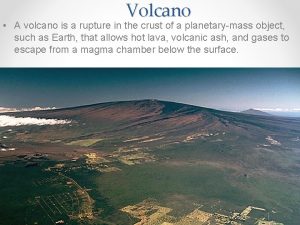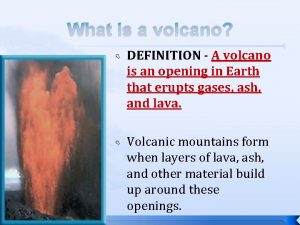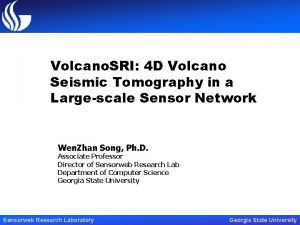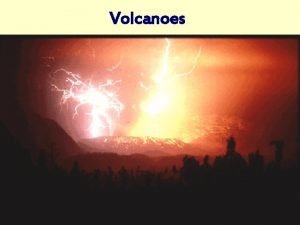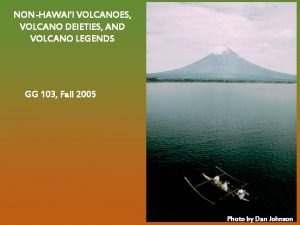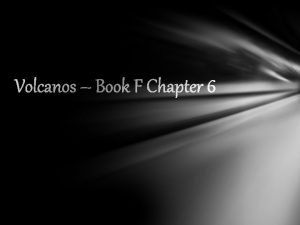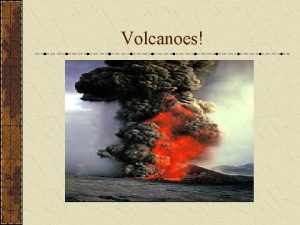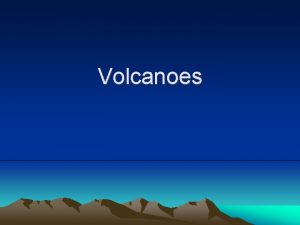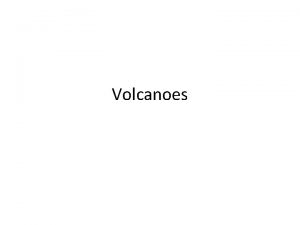Volcano Notes What materials erupt from Volcano 1














- Slides: 14

Volcano Notes What materials erupt from Volcano? 1. Gases 2. Molten Rock 3. Solid Fragments

GASES • • STEAM is most abundant, 66% Other gases CO 2, N, S, H, Cl, Ar, F White clouds: indicate STEAM Bluish/brown: indicate SULFUR

FUMAROLE • Crack in a volcano • Temps range 200400 degrees • Alaska’s Valley of 10, 000 Smokes • SOLFATARA: special fumarole, releases SULFUR

Gases: determine eruption • EXPLOSIVE: thick magma, trapped gases, Ex: Mt Pelee • GENTLE: magma is fluid, gases can escape, Ex: Hawaii

Trapped gases underground • HOT SPRINGS form when groundwater boils • GEYSER is special type that erupts periodically

MOLTEN ROCK • MAGMA: melted rock below the earth’s surface • LAVA: melted rock above the earth’s surface

Types: • AA: rough, jagged, sharp lava • PAHOEHOE: smooth, satin-like, ropey lava

Examples: • PILLOW LAVA: forms when lava flows into the ocean • PILLAR LAVA: as lava cools, surface shrinks, forms hexagonal columns

SOLID FRAGMENTS • • • DUST: smallest ASH: next largest LAPILLI: grape-sized CINDERS: glassy BOMBS: tear-dropped BLOCK: largest TUFF: combination PUMICE: light gray rock, floats SCORIA: heavier, more red

Lapilli, Bomb, Pumice, Block

NUEE ARDENTE • A mixture of steam, other gases, pumice, ash • Flows down hill like an avalanche

Sources of Magma • BATHOLITH: larger than 40 square mi • STOCK: less than 40 square mi • LACCOLITH: Domed surface • DIKE: vertical intrusion • SILL: horizontal intrusion • PIPE: connects • NECK: center of cone • DOME: may form

FISSURE or RIFT • Crack in the surface of earth • Magma escapes • May be miles long

Top of Volcano: • CONE: visible part of volcano, the rim is called the crater • If rim collapses and enlarges it is called a CALDERA
 How do volcanoes erupt
How do volcanoes erupt Spirit break out heaven come down
Spirit break out heaven come down A dome mountain forms when _____.
A dome mountain forms when _____. Notes from a volcano
Notes from a volcano Notes from a volcano
Notes from a volcano Volcano doodle notes
Volcano doodle notes Adopting and adapting teaching materials
Adopting and adapting teaching materials Natural materials
Natural materials Direct materials budget with multiple materials
Direct materials budget with multiple materials About useful and harmful materials
About useful and harmful materials Natural man made
Natural man made Cube wisc
Cube wisc Where did the word volcano originate from
Where did the word volcano originate from Composite volcano
Composite volcano Phenomenon disaster
Phenomenon disaster
